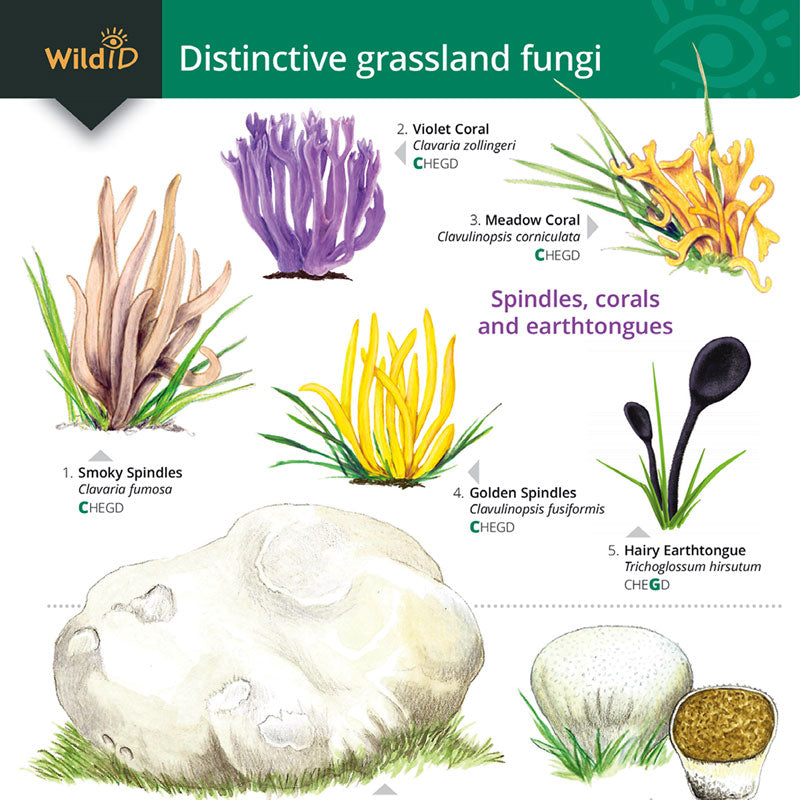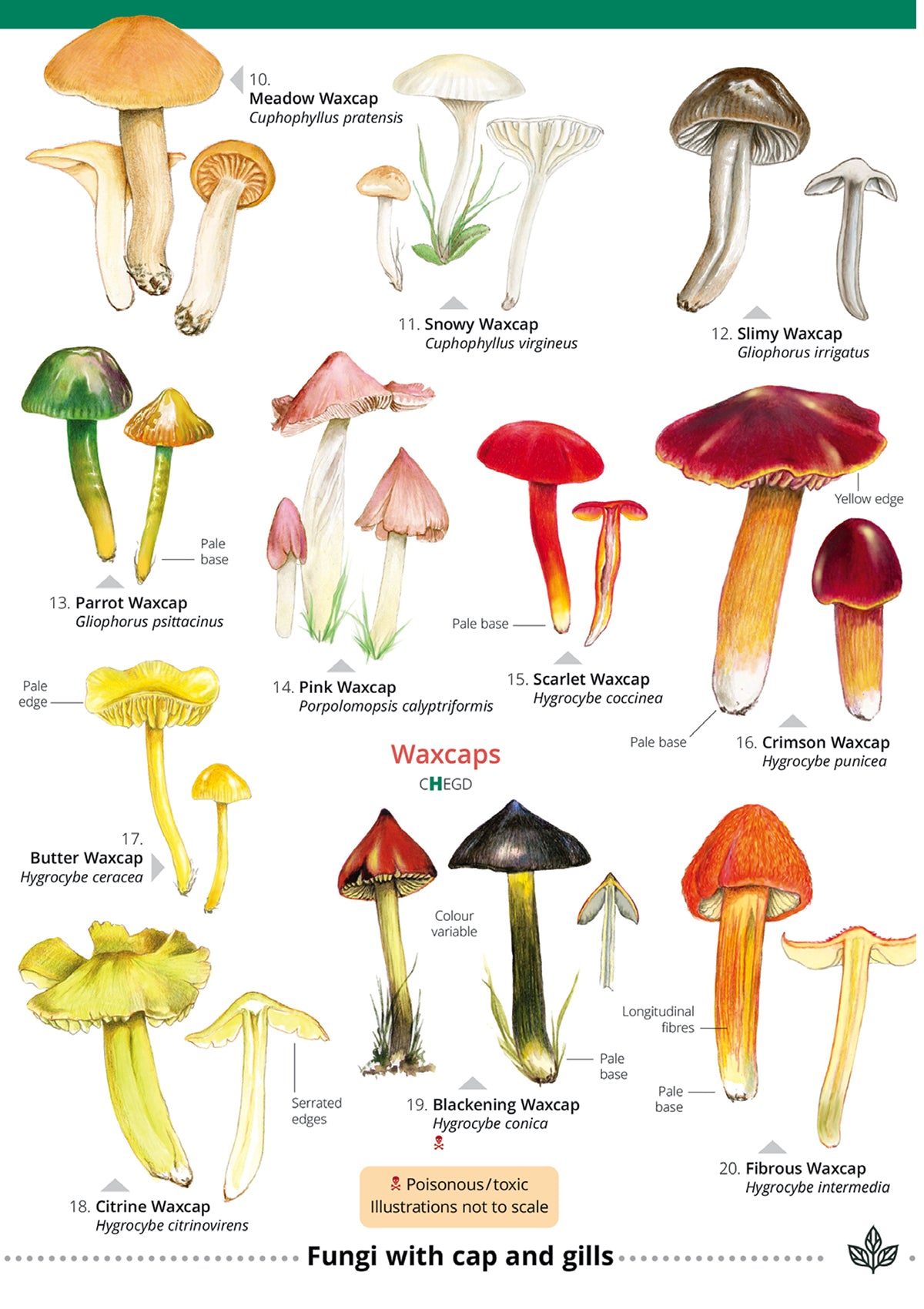Meadow in My Garden
Grassland Fungi
Grassland Fungi
Couldn't load pickup availability
Splashproof 8-panel fold-out field guide
Can be wiped clean
Robust when working outdoors
Rucksack sized - 24.5cm x 17.5cm
The Distinctive grassland fungi guide covers 40 species of spindles, corals, earthtongues, waxcaps, puffballs and more in Britain and Ireland.
Specially-drawn colour illustrations highlight the main features to look out for. Text on the reverse side details key identification features, size, months and habitat for each species.
Fungi are an ancient form of life, diverse and mysterious. You never quite know when and where they will show themselves. Good places to look for the fungi in this guide include grassland, meadows, lawns, parks, churchyards and cemeteries. Although most common in autumn, some may be seen all year round.
Unfortunately identifying fungi seems daunting to beginners. Many species look very similar. Moreover many species lack a common name, and even their scientific names are prone to change from time to time! Many fungi identification books – although brilliant in the hands of experts – look long and intimidating.
So where do you start? A good strategy is to learn to recognise common and distinctive species. The authors of this new guide have chosen 40 species that are not easily confused with any others. These include distinctive waxcaps and earthtongues – both difficult groups. It is both possible to make reliable identifications in the field without using specialist equipment, and there is no need to collect a specimen.
A special extra feature of this guide is an introduction to the CHEGD scoring system. This system uses grassland fungi to help assess a site’s conservation interest. In essence, the more grassland fungi species that are present, the richer the grassland.
This guide is based upon Mushrooms and Toadstools of Britain & Europe, a four volume series of books published between 2017 and 2023 by Geoffrey Kibby, an experienced mycologist and talented artist.








